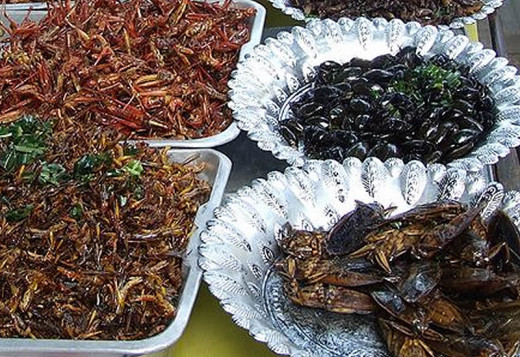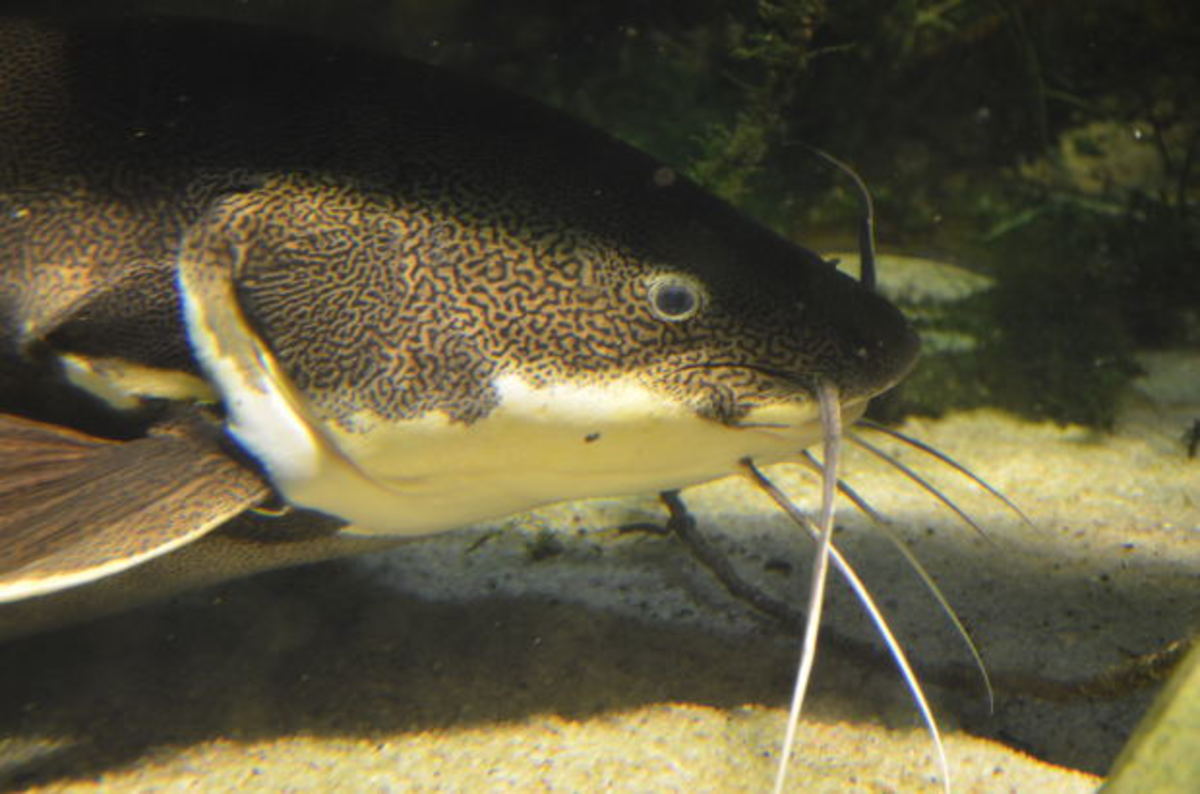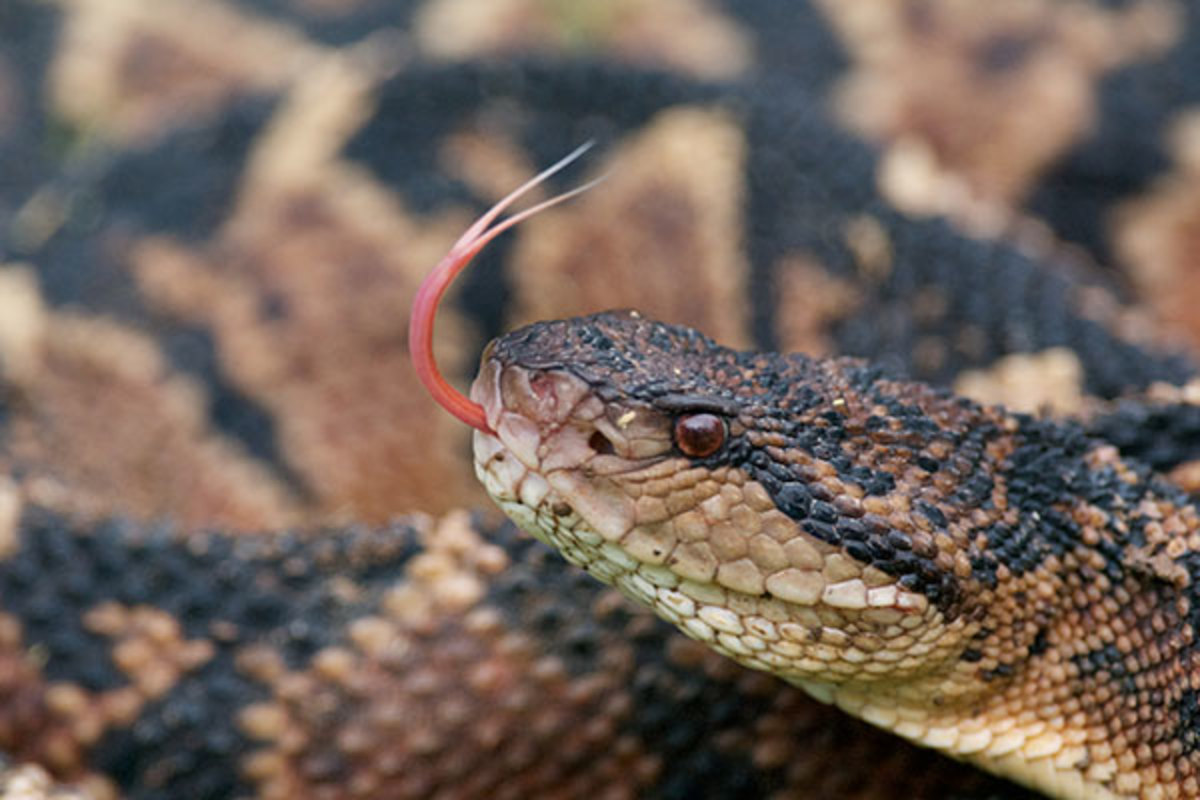Humans Can Eat Insects
Yes, many animals do eat insects. Humans eat insects too. Entomophagy is the consumption of insects for food. Paleolithic humans might have eaten more insects than we do now. Paleolithic humans evolved from chimps and apes, whose diet is mostly vegetarian plus some insects.
Before we get into how humans eat insects, we should discuss how NOT to eat insects. You should not eat insects unless the insects are chosen and cooked properly. One of the key word here is "cooked". You should not eat live insects.
Some insects do carry diseases. The insect world is huge, the majority of which is inedible by humans. Only a certain sub-species of selected insects are edible by humans. Nevertheless, 80% of the world's nations eat over 1,000 species of insects [reference] -- although United States is not one of them.
Insects eaten during modern times
Okay, now back to modern times. For some countries (say United States), their population dislike eating insects so much that hardly anyone eats them. But in other countries (some Asian and African countries, for example), insects are readily eaten.
Take a look at the insects found at the Beijing's night market as described in travel.cnn.com. This is as recent as year 2012. They include ...
- Fried scorpions (according to the vendors, frying neutralizes their poison)
- Centipedes (sharp legs might get stuck in teeth)
- Locusts (high in fiber)
The author (Clarissa Wei) of the article says "scorpions taste like greasy popcorn and sea horses resemble fishy bacon"
Eating Red Ants and Their Eggs
In another article (by Mark Wiens) in CNN Travel, he writes ...
"Red ants and their eggs are prized trophies in a number of Thai dishes."
He further writes that some people like these because ...
"Red ants eat mango leaves so their bodies taste like a squirt of lime. Their eggs, on the other hand, are fatty, like precious morsels of rich butter."
Yes, you can learn a lot from the Travel section of CNN.

Hachinoko are bee larvae. And Inago are terriyaki crickets.
There are even ant popsicles as a treat.
While the following are not technically insects, they are still being eaten by humans.
- Sea horses
- Silkworm cocoons
Stir Fry Wax Worms
In the below video, Daniella Martin shows us how to stir fry wax worms. She is the host of the site GirlMeetsBug.com which is about edible insects.
If that video gives you a craving for wax worms, you might wonder where you can get these. Surely, it would be difficult to find at the local supermarket store if you are in United States. However, San Diego Wax Worms grows and ships wax worms national-wide.
Stir-fry is not the only way to cook insects.
Take a look at this book which give you 33 ways of cooking them: Eat-a-bug Cookbook: 33 ways to cook grasshoppers, ants, water bugs, spiders, centipedes, and their kin
Another book to try is Creepy Crawly Cuisine: The Gourmet Guide to Edible Insects.
If you find chocolate covered grasshoppers to be a treat, there are several such recipes on the web.

Insects a source of protein
Insects can be an alternate source of protein in areas where livestock is spare. In the below TEDxEde talk, Arnold van Huis talks about eating insects as a more sustainable food source.
He says that the protein content of insects is similar to that of fish, beef, and pork. And they are also a source of iron. He says grasshoppers are delicious.
There is even a United Nations report that says insects could be a solution to some of the world's food scarcity.
Everyone is Unkowingly Eating Insects
In another TED Talk by Marcel Dicke, he says that everyone of us is unknowingly eating insects on the order of 500 grams per year. Many processed food contain some trace elements of insects. Insects eats plants and fruits. For example, some tomatoes may have damaged by insects. These goes to make tomato soup; while the undamaged good tomatoes are the ones you see in the produce bins.
There are allowable limits of insect parts in certain foods. From Marcel's slides, it shows...
- Chocolate: 60 insect components allowable in 100 gram
- Peanut button: 30 insect parts / 100 g
- Fruit juice in 205 ml cans can have up to 5 fruitfly eggs and 1-2 larves.
- Wheat can have 75 insect parts per 50 gram.
More and More People are Talking About Eating Insects
Sierra Magazine just had an article in the July/August 2013 edition about eating insects.
Richard Swerdlow talked about eating insects in an NPR Prespective titled "There's a Fly in My Soup" which you can listen to via the link.









